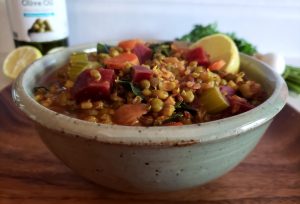 Kitchari is an Indian dish that is traditionally made up of split mung beans, basmati rice, veggies, spices, and ghee. By modifying this basic recipe and including some of the most powerful foods for liver health, this kitchari becomes cleansing, strengthening, and nourishing to the liver. This kitchari recipe is a great dietary addition when performing any cleanse, especially if your goal is for liver health. Although it is extremely cleansing, this recipe is equally as wholesome and can be included in your weekly meal plan, whether you are experiencing liver conditions, desiring to maintain liver health, or simply are wanting a deliciously warm, hearty, healthy meal!
Kitchari is an Indian dish that is traditionally made up of split mung beans, basmati rice, veggies, spices, and ghee. By modifying this basic recipe and including some of the most powerful foods for liver health, this kitchari becomes cleansing, strengthening, and nourishing to the liver. This kitchari recipe is a great dietary addition when performing any cleanse, especially if your goal is for liver health. Although it is extremely cleansing, this recipe is equally as wholesome and can be included in your weekly meal plan, whether you are experiencing liver conditions, desiring to maintain liver health, or simply are wanting a deliciously warm, hearty, healthy meal!
This unique liver cleansing kitchari uses a wide range of liver-healthy foods such as red rice, olive oil, garlic, lemons, beets, celery, and dandelion greens. When eating multiple health-specific foods together, we can create synergistic harmony, making these healing foods more powerful than simply eating them on their own. By slowly cooking them to make a mushy, well-spiced, and well-oiled meal, this dish becomes easy-to-digest and allows the health properties of the ingredients to become more readily available to us.
This liver cleansing kitchari provides many additional health benefits as well. The combination of whole mung beans and red rice make this an exceptionally hearty, nutrient rich meal that is filled with protein (a complete protein source!), fiber, vitamins, minerals, and antioxidants. Beets are one of the best plant based iron sources and are essential for woman’s health, as well as anyone that is experiencing iron-deficiency anemia. Since the liver is intimately related to the blood, skin, and eyes, any food that is healing for the liver will be quite beneficial to these areas too. Filled with easily digestible ingredients, healthy fats, and Ayurvedic spices, this recipe is very soothing during times of digestive distress and is sure to keep your digestive fire happy, healthy, and robust!
Healthy Foods For The Liver
Red Rice
Red rice has been traditionally used in Ayurveda to treat liver disorders and maintain liver health for many years. It is very rich in nutrients, yet easy-to-digest. Like many red foods and herbs, red rice is great for cleansing and strengthening the liver and blood, as well as healing eye and skin conditions (which are directly correlated to our liver health).
Purchase Organic Red Rice here.
Olive Oil
Due to its high level of omega 9 fatty acids, olive oil is stated to be one of the best oils to consume for the health of our liver. Studies have shown this oil to prevent and heal fatty-liver disease, as well as support liver functioning, soothe inflammation, and preserve this vital organ during the aging process.
Fresh Lemon Juice
Recent studies have shown the amazing healing power lemon juice has on the liver. With its high levels of vitamin C, antioxidants, and enzymes, this citrus fruit is said to reduce oxidative stress on the liver, restoring it from injury, preserving its energy, and improving its overall functioning. Studies have also shown lemon to improve glucose metabolism and reduce fat storages in the liver, making it beneficial for times of weakness in the liver, sluggishness in the liver, and/or fatty liver issues.
Turmeric
Turmeric is a well known bitter spice that is great for improving the digestion, cleansing the system, and reducing inflammation. It has been shown to promote healthy bile flow and activate detoxifying enzyme activity in the liver, as well as repair damaged liver cells and preserve healthy ones.
Garlic
Garlic has been shown to activate enzymes in the liver to aid in detoxification while simultaneously providing powerful antioxidant, anti-inflammatory, and antimicrobial effects of its own. Its specific antioxidant profile has an affinity for promoting liver health by reducing cholesterol levels, alleviating oxidative stress, and improving this organ’s overall functioning.
Beets
With their bright red color, beets are extremely high in antioxidants and have a direct affinity to the blood and liver health. They have been shown to stimulate detoxifying enzymes, reduce inflammation, and reduce oxidative stress in the liver. They contain a large amount of the compound betaine, which is shown to alleviate various liver disorders (fatty liver, hepatitis, etc). Beets improve healthy bile flow which is necessary for proper digestion and metabolism; and being naturally detoxifying themselves, they aid in the detox process, reducing the work load for our laborious liver.
Dandelion Greens
When it comes to the health of the liver, “bitter is better”! Although there are many bitter greens out there, I chose dandelion greens because they are one of the bitterest of the bunch. They are packed full of antioxidants and chlorophyll which helps to cleanse, alkalize, restore, and repair the liver as well as maintain healthy liver functioning otherwise. Although they are generally in season from fall, throughout winter, and into spring, if these greens are not available in your local grocery store, kale and collard greens are great substitutes!

Liver Cleansing Kitchari Recipe
Click here for a printable copy of this recipe.
*Pitta types can use this recipe with the proper modifications listed during periods of cleansing throughout the fall and winter seasons.
Materials
- Large sauce or soup pot
- Measuring spoons and cups
- Cutting board and knife
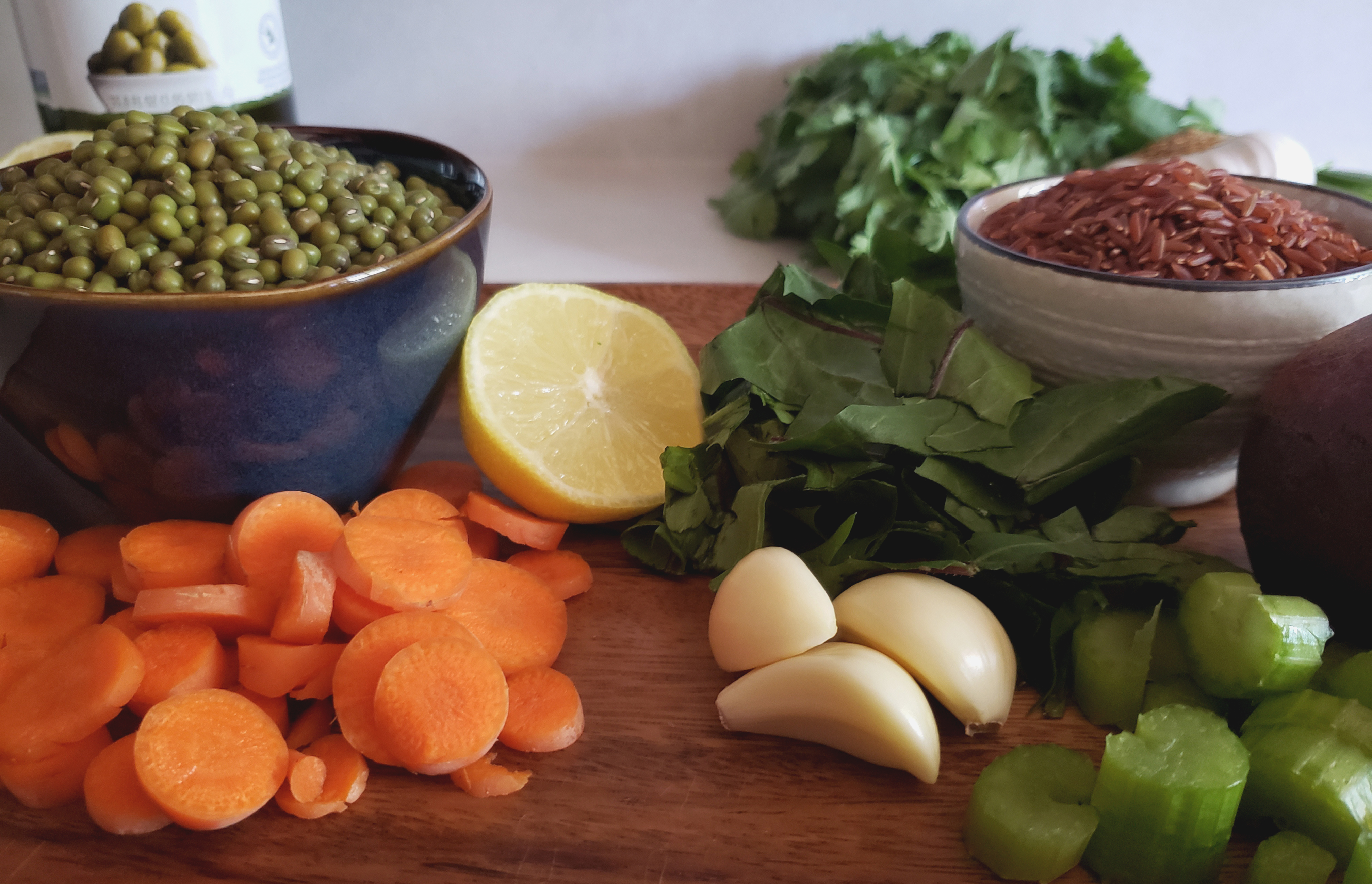
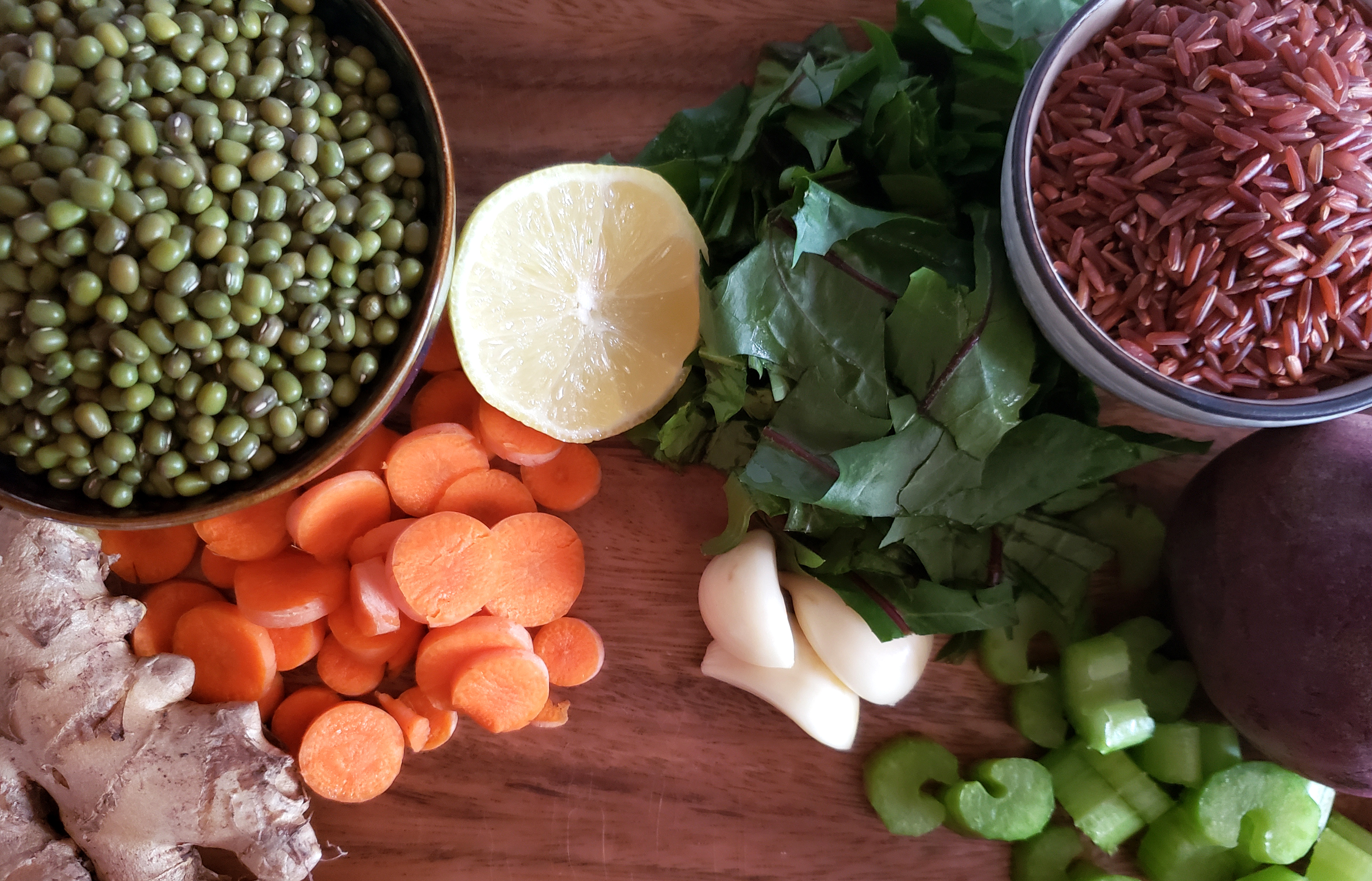
Ingredients
- 1 and 1/2 cups whole mung beans, soaked (purchase here)
- 4 tablespoons olive oil, divided
- 1/3 cup minced onion
- 1/2 teaspoon cumin seed, whole
- 1/4 teaspoon brown mustard seed, whole (omit for Pitta)
- 1/4 teaspoon fennel seed, whole
- 3/4 teaspoon pink Himalayan salt, divided
- 1/8 teaspoon freshly ground black pepper
- 3 cloves garlic, minced (use 1 for Pitta)
- 2 tablespoons finely minced ginger
- 1 teaspoon turmeric
- 1/8 teaspoon cayenne pepper (optional, omit for Pitta)
- 7 and 1/2 cups water
- 1 cup red rice (I love my Lotus Brand Red Rice)
- 1 cup chopped beets (chopped to about 1/2 to 1-inch cubes)
- 1 small carrot, thinly sliced
- 2 celery stalks, thinly sliced
- 1 cup chopped dandelion greens, well packed (substitute with kale or collard greens if needed)
- 1/2 cup chopped cilantro
- Juice of 2 lemons
- Chopped scallions, for garnish
- Chopped cilantro leaf, for garnish
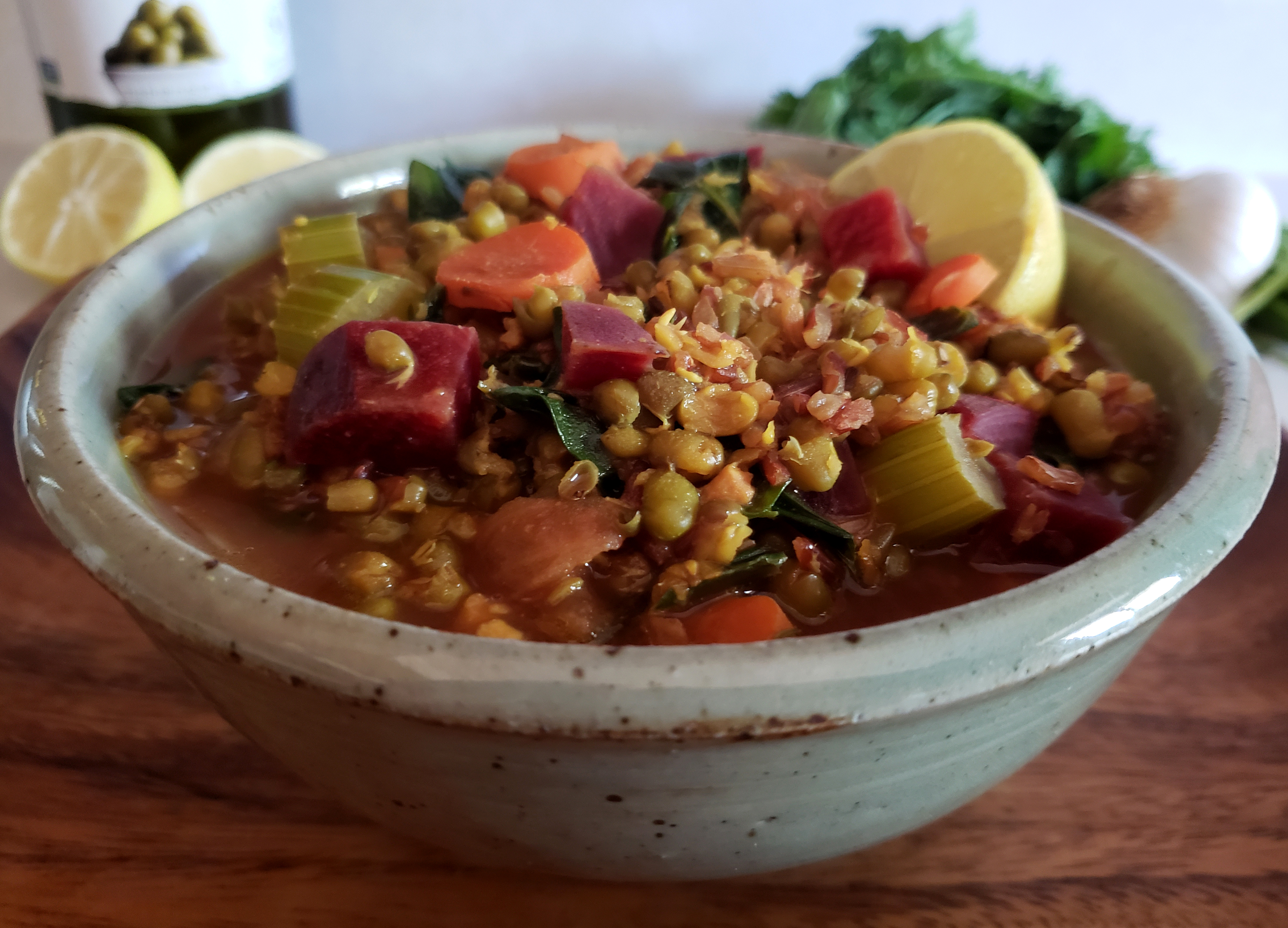
Click here for a printable copy of this recipe.
Directions
1. Soak the mung beans overnight in a large container of water. If time is short, place the beans in a glass container and cover them with boiling water. Let the beans soak in the hot water for a minimum of 30 minutes, although at least 2 to 6 hours would be ideal.
2. Strain the beans and discard the water.
3. Heat 2 tablespoons of olive oil in a large pot over medium heat. Add in the minced onion, cumin seeds, brown mustard seeds, fennel seeds, 1/2 teaspoon of salt, and black pepper. Sauté for 2 minutes, stirring frequently.
4. Add in the minced garlic, minced ginger, turmeric, and cayenne pepper (if using). Sauté for an additional 30 seconds, stirring constantly.
5. Add in the water, increase the heat to high, and bring it to a boil.
6. Once boiling, reduce the heat to medium and add in the mung beans. Cook, mostly covered, for 10 minutes. Stir halfway through.
7. Add in the red rice and beets. Continue to cook on medium for 20 minutes. Stir every 5 minutes.
8. Add in the carrots, celery, and dandelion greens. Reduce the heat slightly to medium-low and cook for 15 minutes. Stir every 5 minutes. If at any point the kitchari becomes too dry, carefully add in more water by the 1/4 cup.
9. After 15 minutes, check on your kitchari. If the beans, rice, and veggies are not all extremely mushy and well cooked, reduce the heat to low, cover the pan completely, and cook for an additional 5 to 10 minutes. Check and stir every 1 to 2 minutes.
10. Once the kitchari is well-cooked to your desire, turn the heat off. Add in the remaining 1/4 teaspoon of salt, lemon juice, cilantro, and remaining 2 tablespoons of olive oil. Stir well until all of the ingredients have been evenly blended.
11. Serve into bowls. Garnish each bowl with a handful of scallions and extra cilantro.
12. Eat this deliciously cleansing dish as a mono-diet during any cleanse (especially liver cleanses), or simply enjoy it as a hearty, healthy lunch or dinner throughout the fall and winter seasons.
Reheating Tip:
Although food is always best when eaten fresh, leftovers can be stored in an airtight glass container for 2 to 5 days. When reheating, use only the amount that is needed at that time (never reheat food more than once!). Place the kitchari in a small pan. Add a splash of water and 1/2 teaspoon of fresh olive oil per serving. Reheat, covered, on a very low setting for 10 to 15 minutes, stirring frequently. Once heated, add a dash of salt and a splash of fresh lemon juice. Stir well and enjoy!
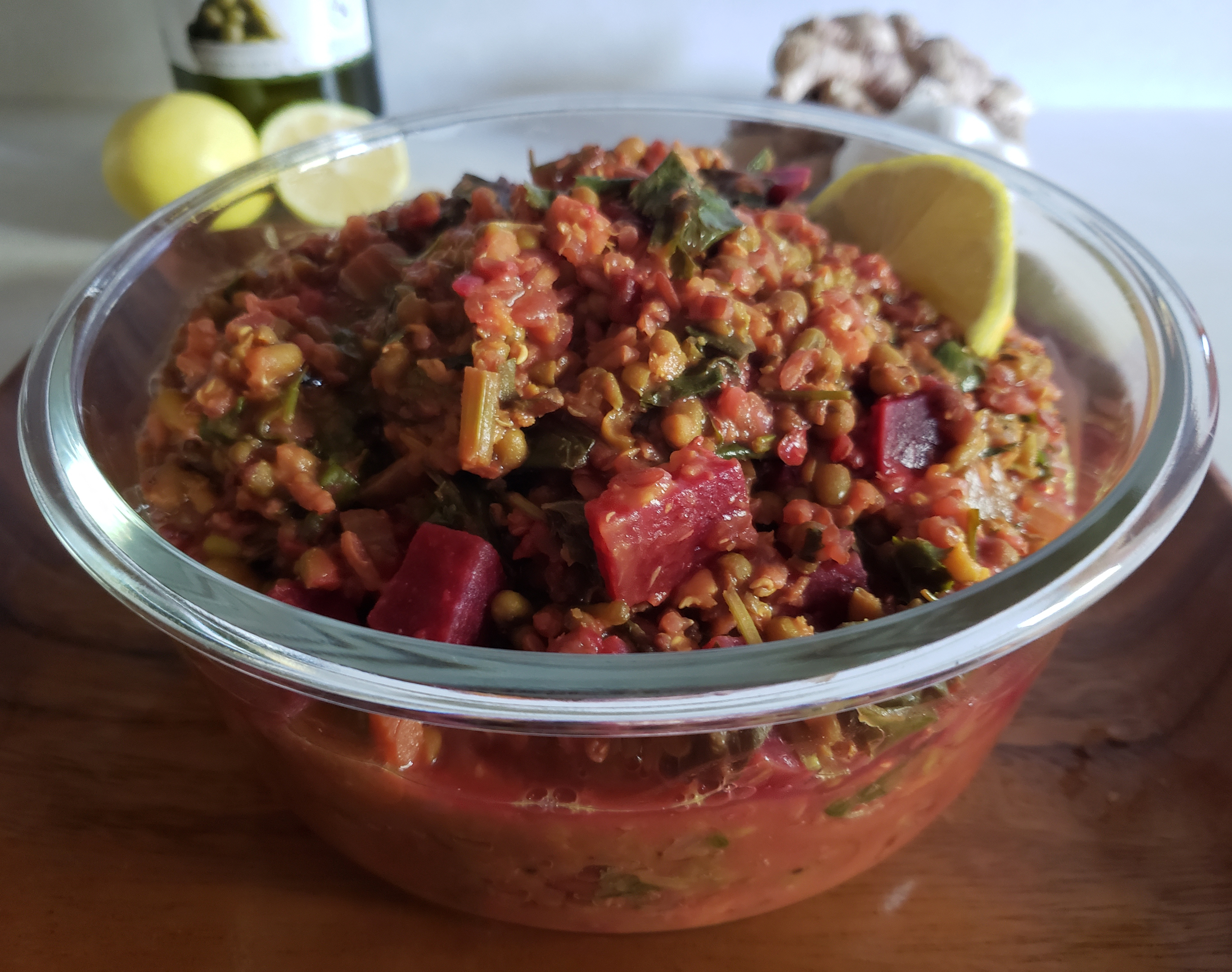
Discover more healing recipes with my 30-Minute Ayurvedic Cookbook!

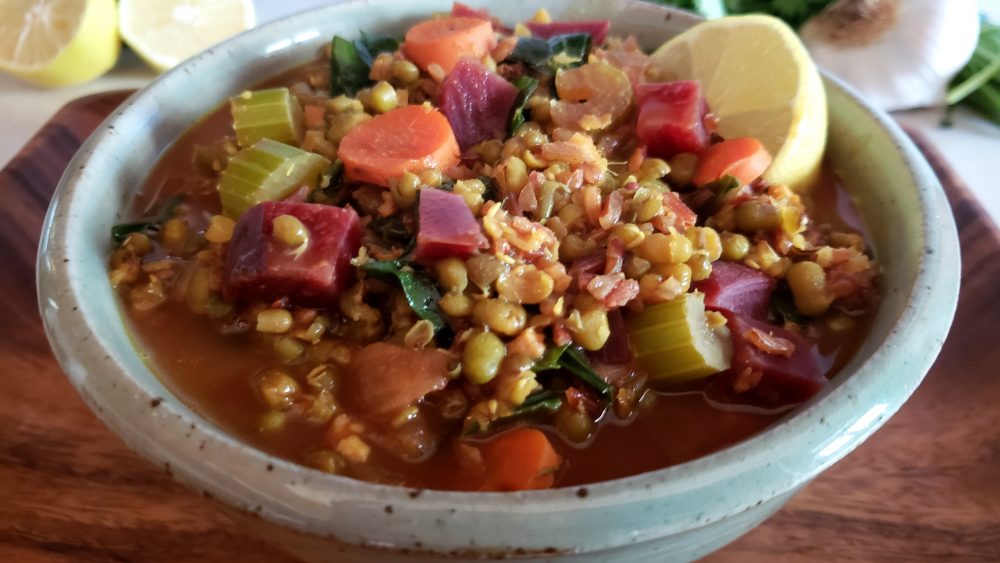
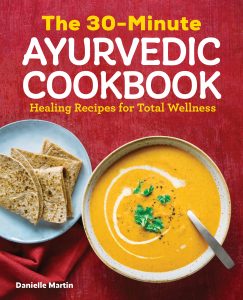

Hi Danielle! Does this recipe will serve a 3 day cleanse?
Hi Nadia,
This recipe will be enough for 4 to 5 meals. I you plan to eat it 3 times daily during your cleanse, you will likely need to make a second batch.
Please let me know if you have any further questions!
Namaste,
Danielle